Truck drivers are the lifeblood of the Indian Army.
They form the mainstay of the Army’s Service Corps and Ordnance Corps.
They tow the big guns for the Artillery and keep its sophisticated missile launch platforms on the move.
They man tank transporters – and the battletanks themselves – for the Armoured Corps.
They speed soldiers of the mechanised infantry to battle in their armoured fighting vehicles.
And, for the Engineers, those magnificent men in their marvellous machines move mountains.
Yet, when most of them retire from the force at their prime and return to their families on their farms or in their villages, they are lost to the profession forever.
Unlike pilots of the Indian Air Force, who segue into lucrative civilian careers in commercial aviation, fauji (soldier) drivers rarely choose a civvy life in commercial trucking — for reasons everybody knows but few want to do anything about.
Whereas IAF veterans are highly sought-after by every single passenger and cargo airline in the country, there’s been no concerted effort by India’s biggest road transporters to attract and hire ex-servicemen (ESMs) as drivers.
A crying shame, considering that this most highly trained, disciplined, and motivated workforce is theirs for the asking. More so if you account for the fabled driver shortage, which really is nothing but a measure of the sector’s desperate need for trained drivers with verifiable antecedents.
A 50 percent surplus of licensed drivers relative to the size of the total fleet notwithstanding, thousands of the 3.4 million trucks with interstate and national permits are idled, sometimes for months on end, while cheese-paring fleet owners chase mercenary drivers who will jump ship for a few rupees more.
It’s a perennial problem that’s been pretty much ignored by the more than 1,000 well-funded “logtech” entrepreneurs, who’ve all chosen to exclusively focus on improvements peripheral to the trucking ecosystem.
Only two startups are plugging away at strengthening the “manpower logistics” core, and their far-reaching vision has faujis front and centre. Eliot Lobo reports.
By the time a fauji driver retires at age 35–42 with a minimum of 17 years of Army discipline under his belt, he’s been trained to a degree of expertise that exceeds the Level 4 occupational standards of both, the Automotive Skills Development Council’s ASC/Q9703 qualification pack for commercial truck drivers and the ASC/Q1402 QP for service technicians.
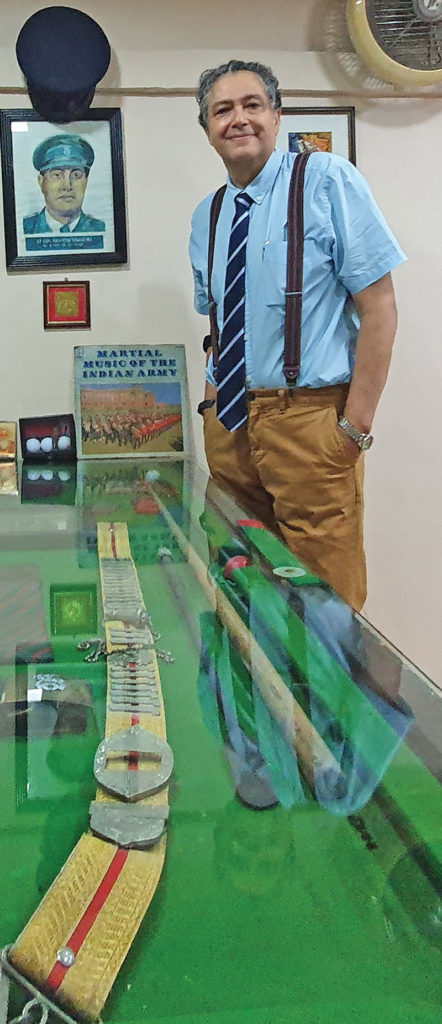
But except for a few stray cases in Punjab, you won’t find an ESM employed as a truck driver anywhere. For one thing, there’s little appreciation for the incalculable value of a trained driver, even among the most progressive fleetowners. Most understand that there’s no force-fitting a fauji into their unstructured and messy mediocracy, and for his part no fauji would choose to work in the subhuman conditions that obtain in much of commercial trucking.
Another put-off is the fact that, according to S.P. Singh of the Indian Foundation for Transportation Research and Training (IFTRT), 90 percent of the 2.5 million registered transporters in the country don’t maintain records of those they employ, and do not pay ESI, PF, or gratuity. Indeed, even the biggest names in the business, among them signal startups Rivigo and DHL SmarTrucking, get around their statutory obligations — by the expedient of outsourcing.
These two factors have led to a mushrooming in the last five years of agencies that (purport to) assume those obligations for a fee. It’s in the agency model, ironically, that Sanjeev Chandra, managing director of Maxplus Logistics, saw his best hope of turning the ESM value proposition into a commercial success.
But Maxplus is much more than a staffing agency; the unquestionable credentials of its ESMs, rigorous vetting they must undergo, and a military-style command structure that maintains morale and discipline, allow it to offer its fleetowner customers an unequalled standard of assurance — a gold standard as it were.
This is of particular interest to fleets in express and contract logistics that transport high-value cargoes, for whom dependability is paramount — every driver hired has to have solid references, regardless of how certifiably well trained he might be.
But ironclad guarantees of this nature presuppose strategic “ownership” of, and investment in ongoing training of, the asset (the driver) upfront, Chandra points out — you need to first develop a product you can sell, not chase contracts and hire ad hoc.
This is the paradigm he’s pivoting to, following the expiry of Maxplus’s first bread-and-butter contract at the end of June. More on that below.
A compelling proposition
Growing up, Chandra’s milieu was peopled by faujis, and fauji drivers. His father served the Scinde Horse regiment of the Armoured Corps, retiring in 1979 as a brigadier.
An MBA in international finance at George Washington University led to a succession of appointments at Franklin Mint, one of the world’s leading manufacturers of collectibles, in the US, Malaysia, and the UK.
Chandra returned to India in 1992 and set up Labels International, a manufacturer of narrow-width jacquard fabrics, a couple of years later. The pressure of keeping this business afloat eventually told on his health and, heeding the doctor’s advice, he shut up shop in 2010.
Instead, he took up a sedate assignment heading north zone operations for the domestic broking arm of a British insurance group. Five years later an opportunity as advisor-CEO presented itself at the erstwhile BIC Logistics (now Bhandari Interstate Carriers). This stint lasted only eight months, but it was here that Chandra learnt first-hand about the “driver shortage” problem.
An incident in which a rogue driver made off with a cargo of “crores” of rupees worth of diesel systems for a new Tata car model proved to be his eureka moment. While the truck and cargo were recovered in a village in the deep interiors of Maharashtra after a two-month-long hunt, the idea of what would become Maxplus Logistics had begun to germinate.
Chandra was up to his elbows in an effort to streamline BIC when, in April 2016, Manjiv Singh, chief project officer at SpiceJet Ltd and a relative, made him a proposal he couldn’t refuse.
The private airline was in the process of setting up its cargo venture and had bought a fleet of Mahindra Maxximo, Bolero, and Loadking trucks across 30+ stations at which it planned to operate a door-to-door (D2D) service. Singh, mindful of Chandra’s musings on fauji drivers and how best to mainstream them, offered him a contract to man D2D ops in Delhi NCR and another station in the northeast.
One thing led to another and by mid-May the scope of the contract had expanded to encompass all 30+ stations. Maxplus was in business.
Chandra teamed up with Lt. Gen. A.K. Bhalla, a decorated veteran of the Armoured Corps who’d only recently retired as director-general of the Defence Intelligence Agency (DIA), and got the entire operation up and running within six months.
To help them hit the ground running, the folks at this SpiceJet startup generously acceded to Lt. Gen. Bhalla’s request that Maxplus be additionally compensated to hire JCOs (junior commissioned officers) as controllers, emulating the lowermost command structure of the Army in which the JCO serves as a platoon commander over 30 men.
These resourceful leaders, the most immediate authority figures for the men in their charge, whose interests, conversely, they forcefully represent to the higher-ups – “a JCO pulls no punches when defending the soldier in front of the saab”, – were Maxplus’s best bet to get things going. Without this key element, Chandra says Bhalla told him, the fauji driver would remain a fantasy.
Thanks to the Lt. Gen.’s good offices, the first JCOs Maxplus was able to source for its Punjab, Chandigarh, and NCR locations were Risaldars-major from Bhalla’s own regiment, Hodson’s Horse. They, and the rest of the 12 who signed on at the other locations, were instrumental in establishing the well-oiled machine pan-India that would be the mainstay of Maxplus’s business for the next four years.
The JCOs set up and furnished military-style barracks for the drivers at each location, the second of Bhalla’s stipulations, and oversaw day-to-day operations pretty much autonomously. Some were given responsibility for multiple locations, such as the one in Pune for Mumbai and Aurangabad as well; the one in Chennai for all three stations in Tamil Nadu; one of the two in Delhi for Rajasthan and Punjab, and the other for Lucknow, Patna, and Indore.
Bhalla took Chandra to Maj. Gen. Deepak Sapra of the Army Welfare Placement Organisation (AWPO), who immediately arranged for interviews with the fauji drivers on his database. That Maxplus was able to ramp up to its full complement of 160-odd drivers in six months would appear to be fortuitous, considering that Uber too was hiring aggressively at the time, dangling incomes of ₹65,000+ a month (that never materialised) under its UberFAUJI programme.
But Chandra scored, despite making an offer of ₹28,500 all-in, because of (his appreciation of) the fact that a fauji, in whom his Army training has inculcated the imperative to perform at his maximum all the time, invariably expects the certainty of a steady income — no financial enticement is going to get him to settle for the vagaries of a gig.
Long look at long haul
What a fauji is more interested in knowing is whether his khaana (meals) and rahna (housing) are being taken care of, Chandra says. Which was not quite the case in one of the first long haul trials that Maxplus did last year together with a steel manufacturer in Chhattisgarh.
Though its drivers had by now begun to operate larger (12 tonne) Eicher Pro 1110s on longer-distance intercity routes such as Delhi–Chandigarh and Delhi–Jaipur, SpiceJet Cargo’s optimistic growth projections hadn’t quite panned out overall. Chandra, consequently, had had to put his hiring plans for Kolkata, Chennai, and Pune on ice.
SpiceJet had long stopped paying the salaries of the JCOs at those key stations, which Maxplus was forced to fork out. It had already let some others go for the same reason beginning at end-2016 itself, and delegated their duties to the best-performing drivers at the respective locations.
The company thus had drivers it could readily redeploy to the steel operation. For three months, 24 of them (in rotation) would transport ore from a depot in Raipur to the plant in Champa and finished-steel in the reverse. They’d cover the 330 km route to and fro in a day, whereas the customer’s own drivers used to take two, stopping along the way to pilfer coal and ore in collusion with the managers, local mafias, and factory guards at the customer’s own weigh stations, and sogging the remaining cargo to make up the weight.
Without a JCO on the ground to pull rank (the customer wouldn’t pay for one), the Maxplus men kept “running away”, Chandra says — understandably, considering the “rudimentary” barracks they’d been given were dilapidated flats the customer’s supervisory staff had once lived in, now lined with a thick layer of coal dust. That put paid to an engagement Chandra saw “lots of potential” in growing.
In July last year Maxplus ran a pilot with GoBolt involving a single vehicle and a dozen drivers in a team operation, on an express schedule for Amazon on the Delhi to Hyderabad lane. Its men were thrown in the deep end, being required to deliver the goods with no initiation whatever, although the client agreed to waive the 42 hour turnaround time (TAT) requirement and relax the 315 litre fuel budget for the outbound leg of the first round trip.
A tough ask, considering the drivers’ unfamiliarity with the route, but Maxplus managed to maintain the TAT for the seven subsequent legs by pairing one new driver per leg with one who’d gone the distance already. Moreover, its drivers were on budget for fuel on three of the eight legs, even saving as much as 25 litres on the second outbound leg.
But GoBolt moved the goalposts, demanding an extra unscheduled trip with a different vehicle. Maxplus scrambled to deploy a driver team, neither of whom had driven the route before. They’d had no experience using the GoBolt app, and one was unable to get used to the vehicle in question. The result was that they took 10 hours longer to complete the outbound leg and eight more on the return, albeit staying bang on budget each way. The client concluded the entire exercise a failure; Chandra insists it was a success “with huge potential”.
The fuel overconsumption on four of the nine legs counted, ranged from a marginal 1.5 percent to 6 percent, for which Chandra says he offered to pay a penalty, and for each TAT extension “beyond an acceptable variance” besides. But the client elected to terminate the contract instead, even though its own drivers egregiously exceeded the TAT on that route — with no consequences.
Maxplus also briefly worked with Chandra’s ex-employer BIC on a team driver trial, but the single round-trip they did between Delhi and Coimbatore was downright unsuccessful. In this case, though the customer had been willing to pay ₹70,000 for both drivers, unloading and reloading delays at Coimbatore resulted in a turnaround that was a week longer than planned. Chandra realised it would be unviable for BIC to continue the engagement, and says he advised director Chandandeep Bhandari, a friend, as much.
Tons of learnings
The contract with SpiceJet Cargo came to an end on 30 June, and given the COVID-19 situation, Chandra has had to furlough all his drivers as he works out the contours of Maxplus 2.0.
But the four years have been a valuable learning experience — in what works and what doesn’t. Relay driving, for one, doesn’t. “Sending three runners into a 4 × 400m relay means one of them is going to have to run twice the distance. No algorithm on earth will win you that race.”
Another key learning that concerns the finished-goods logistics industry specifically was just how corrupt the entire system is — the payoffs demanded by managers at all levels to grease FMCG supply chains put those paid in the clammy corridors of government well in the shade, Chandra says.
And except for Amazon and a few Japanese companies, the lower management levels at freight-buying organisations are extremely resistant to any attempt to improve conditions for drivers on their premises.
Of course, there’s also sheer envy at play here. While a fauji is no pushover, sometimes there’s nothing that self-important white collar folks, resentful of a more highly paid ESM in their midst, or stirred to guilt – or driven to revenge – by an ESM who shuns complicity in their corrupt dealings, will not do to make his life difficult.
There’ve also been learnings about the drivers themselves. On clearly predefined routes with established pickup and dropoff points and swift turnarounds, a fauji driver is nigh unbeatable. But he will only perform at his best if he maintains his military conditioning, which is why creating the right environment is crucial. ESMs work well as a company, not so in ones and twos, Chandra points out. “Without a JCO over him, the fauji driver is programmed to fail.”
An Army driver’s priority is always to deliver his payload to its destination within a set time, and fuel consumption is no object. That said, picking up fuel-saving driving skills is a cinch — accustomed as he’s been to receiving training throughout his career, the fauji is a more eager learner than most (untrained) civilian drivers.
The making of Maxplus 2.0
Before the COVID lockdown nationwide, Chandra also explored, together with Amazon, the possibility of staffing a few large fleets that operate for the e-comm giant, but they reportedly baulked at the asking price. One of them agreed with his thesis that hiring only a handful of faujis wouldn’t work, but told him that replacing all his 700-odd drivers was out of the question.
Meanwhile, Maxplus has been chasing smaller localised opportunities, such as for 30 drivers with Truxapp in the NCR for a B2B fuel delivery business; a financed ownership proposition for up to 100 heavy-truck drivers in an operation for Ramco Cements on routes to and from its grinding units in Odisha and Vizag, and a similar offering for 20 faujis each in Chennai, Hyderabad, and Pune with small-truck-on-demand platform Lynk, a Ramco subsidiary.
Earlier this year, Chandra began work with Ashok Leyland to offer its customers Maxplus-certified drivers with the trucks they buy, but progress was “halted by COVID”. Meanwhile, he says he’s hammered out a “very good deal” for retiring faujis with Hinduja Leyland Finance that will help them acquire Ashok Leyland trucks and set up their own transport businesses contracted to Maxplus for clinker and cement transport in the Odisha region on the lines of the coal tipper attachment scheme of the Department of Ex-Servicemen Welfare.
Now that the lockdowns are lifted, he plans to regroup, and to reorient the business exclusively to the requirements of long-haul. At the moment, he’s canvassing social venture capital support for his bid to scale Maxplus up to meet the challenge of tackling trucking’s biggest pain point.
He’s also scouting around for a joint venture partner from the US, specifically a large fleet with expertise in military logistics, preparatory to making a play for what could potentially be a major Army contract when the Service Corps is privatised — within three years, as he says he’s gathered from his contacts it will be.
In any case, expanding and sustaining the Army deployment against the Chinese in Ladakh, a region that’s dependent on resupply by road, is going to take resources beyond what the ASC is presently scoped to provide. A decision in this regard should have been taken by the time this article is out. If that works out, who knows — the Army could soon be firing its guns from off Maxplus’s fauji drivers’ shoulders.
May the force be with you
The few fleets that do maintain employment rolls also pay their drivers significantly better than the industry standard. Their salaries are structured as follows:
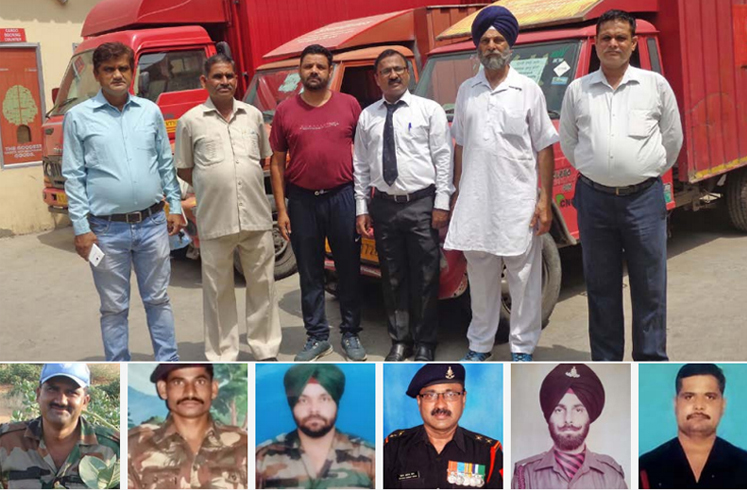
Singh (30 Apr 2017, 106 Engr), ex-Honorary Subedar Major Pathan Ashraf Khan (31 Oct 2016, 1 FOD), ex-Havildar Ujagar Singh (31 Jul 2000, 194 Fd),
ex-Havildar Braj Kishor Sharma (30 Jun 2014, 5131 ASC Bn). Chandra’s faujis are presently on furlough as he works out the contours of Maxplus 2.0.
There’s a fixed component, which varies by employer but is usually the statutory minimum of ₹15,000 (₹17,500 in Maharashtra), plus a meal allowance of ₹250–300 a day and, at Gurugram-headquartered fleet X that runs BharatBenz and MAN trucks, a mobile phone allowance of ₹500 for the month that takes the total to ₹23,000.
In most cases, though, the driver earns more from the variable component, which comprises an estimated ₹2/km mileage incentive at X (effectively, the value of diesel left in the tank after the trip has been completed — the more fuel-efficiently he drives, the more he gets to keep) and a ₹2/km trip allowance towards route expenses like tolls, payoffs to RTO officials, and extortion at border checkposts.
According to owner R.S., the rule of thumb is that his drivers get to keep half of the trip allowance, which means that in a good month, if they do 10,000 km, they could take home up to ₹53,000 [₹23,000 + 10,000 × (₹2+₹1)].
Trendsetting Mumbai-based transporter Y, which operates an all-BharatBenz fleet, puts a greater level of trust in its drivers, paying its top guns a much higher fixed salary of ₹45,000 plus an effective mileage incentive of ₹1/km and the ₹2/km trip allowance, which chief executive J.K. estimates his drivers too save half of at the end of each trip. They cover up to 9,000 km every month, earning ₹60,000–63,000.
The higher the proportion of variable pay, the poorer the fleetowner’s visibility into the true cost of his drivers to the company (CTC).
Chandra believes a salary of ₹38,000 (₹42,000 all-in for the fleetowner) – subject, of, course, to observance of the hours-of-work rules in the Motor Transport Workers Act, 1961, and the creation of acceptable working conditions – would make long haul driving an attractive proposition for many more ESMs than the 160-odd he has deployed so far, and give fleetowners a handle on their driver costs.
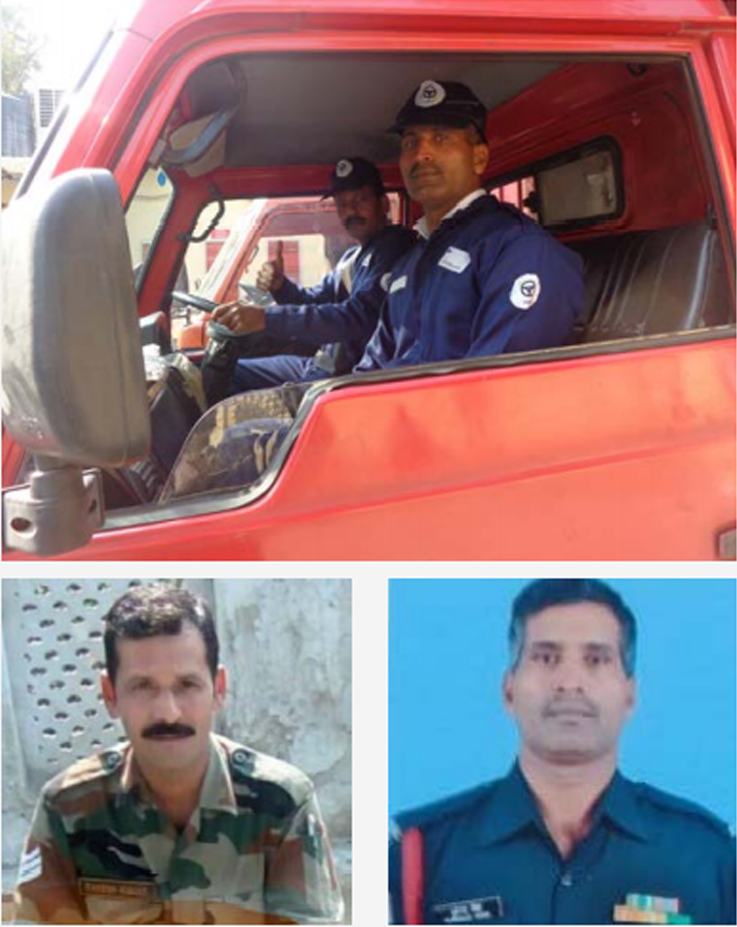
No less importantly, a relatively minor incremental investment in a JCO controller, plus a one-time investment in rest and hygiene facilities, will yield huge recurring savings for fleets that hire 30 ESMs or more — 20 percent in the case of X and 33 percent for Y.
Variable salaries were introduced in recent years in an attempt to foil the thieving proclivities of drivers forced to live by their wits on exploitative salaries IFTRT’s Singh says are even today as low as ₹5,000.
With an ESM, there’s no fear of diesel being siphoned off, or of the truck being stripped of new tyres or anything of value that can be sold. His standard salary, together with his Army pension, add up to as much as, or more than, his pay at retirement. Plus he retains his medical benefits and canteen privileges, so you rarely find an ESM driver on the make — unlike the majority of civilian drivers.
What’s not to like?
Winning hearts, changing minds
Maxplus Vedrive Pvt Ltd was set up with the intention of monetising the business. It was conceived as a driver-on-demand service, with a database of verified drivers accessible to fleetowners whose PANs and GSTINs the company would first authenticate before allowing them onto the “platform”.
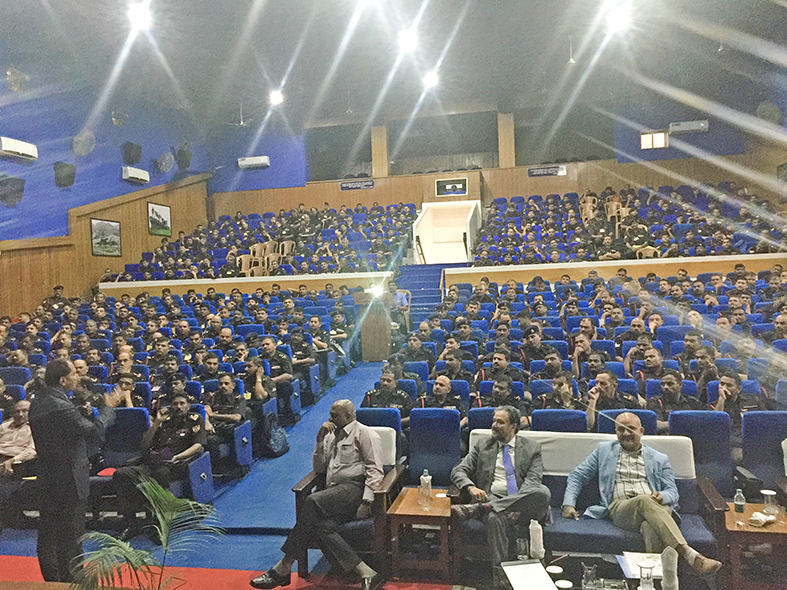
The fleetowner would have to enter details of his transport and the endpoints, against which the system would provide an instant quote, factoring in the costs of detention, or of the driver’s journey back to base in case of a one-way trip. The fleetowner’s acceptance of the quote would algorithmically connect him to an available driver who’d signed up for that route, cargo type, etc, and the movement of the vehicle and the cargo would be fully traceable from end to end.
Chandra’s son Kanav, a data scientist down from the US at end-2018 on a break between jobs, led development of the prototype; the Maxplus CEO reckons the app will take ₹12–14 lakh to program and debug, and investment in the infrastructure for boots on the ground another ₹50 lakh.
The plan was to launch in Chennai and first “build bulk” in the south of India – a “safer and more honest business environment” – before expanding to Hyderabad, Pune, and Mumbai in that order. But pending investment – “the VCs are obsessed with toplines; they just don’t appreciate that we are in a people business,” he grumbles, – Vedrive had to be put on the shelf. Then Corona hit.
“The buying community is ready for dynamic pricing and variable costs,” Chandra asserts. But it’s been an uphill task trying to convince fauji drivers to take up the profession again at a scale that will make an impact.
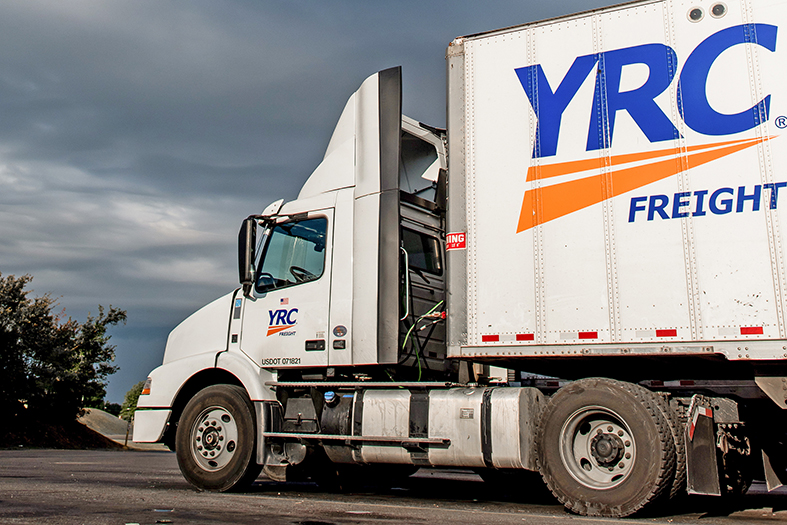
Be that as it may, the indefatigable sexagenarian isn’t giving up. Having managed to attract a handful of drivers to Delhi and a couple to Punjab following a presentation he made at the Armoured Corps Centre in Ahmednagar when Maxplus first started up in 2016, Chandra took his roadshow to the ASC Centre in Bengaluru this February, making the case for a civilian driving career to faujis from the Service Corps undergoing their 10-day retirement drill. This is the largest corps retiring drivers, he points out — “In the ASC, even a clerk has gone through the driving ranks.”
Using an Eicher truck and an Ashok Leyland U-4218 five-axle cab-and-chassis as exhibits, he was able to persuade many on hand of the fact that commercial trucks today are no longer the uncivilised beasts of yore.
Chandra says he’s discussed with Vinod Aggarwal, MD and CEO of VE Commercial Vehicles, the modalities of working with the Army to familiarise retiring soldiers with Eicher’s new generation of BS-VI trucks with a focus on fuel-efficient driving.